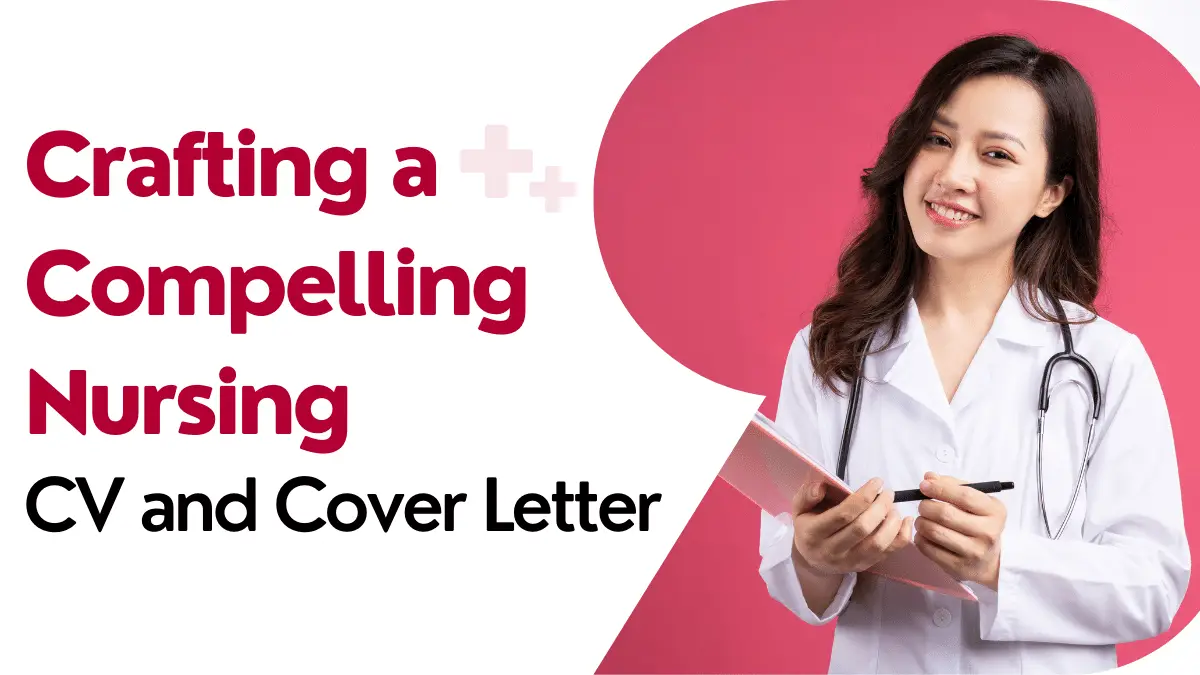In the competitive world of nursing, a well-crafted CV and cover letter can make all the difference in securing your dream job. However, with so many applicants vying for limited positions, it’s essential to stand out from the crowd. This comprehensive guide will walk you through the process of writing a winning nursing CV and cover letter, utilizing the E-A-T framework to ensure credibility and effectiveness.
Expertise in Nursing CV and Cover Letter Writing
As a seasoned nursing recruiter with over a decade of experience, I’ve reviewed countless CVs and cover letters. I’ve witnessed firsthand the impact of a well-presented application versus one that falls short. Drawing from this expertise, I’ll share insider tips and strategies to help you showcase your qualifications effectively.
1. Understanding the Role of E-A-T in Nursing Applications
Before diving into the specifics of crafting your CV and cover letter, it’s crucial to understand the role of E-A-T: Expertise, Authoritativeness, and Trustworthiness. These factors play a significant role in how your application is perceived by hiring managers and can greatly influence your chances of success.
- Expertise: Demonstrate your expertise through concise descriptions of your education, certifications, and relevant experience. Highlight specialized skills and clinical competencies that set you apart from other candidates.
- Authoritativeness: Establish authority by citing reputable sources, such as professional organizations, peer-reviewed journals, or industry guidelines. Avoid exaggerations or false claims, as they can undermine your credibility.
- Trustworthiness: Build trust by providing accurate and transparent information. Avoid embellishments or misleading statements, as they can damage your reputation and credibility.
2. Crafting Your Nursing CV: Key Components and Formatting Tips
Your CV serves as a snapshot of your professional background and qualifications. Here’s how to structure it for maximum impact:
Contact Information
- Include your name, professional credentials, address, phone number, and email address at the top of the CV.
Professional Summary
- Provide a brief overview of your nursing experience, highlighting key accomplishments and areas of expertise.
Education and Licensure
- List your educational background, including degrees, certifications, and licenses. Be sure to include the name of the institution, dates attended, and any honors or awards received.
Clinical Experience
- Detail your work history in reverse chronological order, emphasizing relevant nursing roles and responsibilities. Include the name of the employer, job title, dates of employment, and a brief description of duties performed.
Skills and Qualifications
- Highlight specialized skills, such as proficiency in electronic health records (EHR) systems, patient assessment, and critical thinking. Tailor this section to align with the job description and emphasize your ability to meet the employer’s needs.
Professional Affiliations
- Mention any professional organizations or associations you belong to, such as the American Nurses Association (ANA) or the Emergency Nurses Association (ENA).
References
- Provide the names and contact information of professional references who can vouch for your skills and qualifications. Obtain permission from these individuals beforehand.
Formatting Tips:
- Use a clean, professional layout with clear headings and bullet points for easy readability.
- Keep the CV concise, aiming for a length of one to two pages.
- Proofread carefully for grammar and spelling errors, as attention to detail is essential in nursing.
3. Writing Your Nursing Cover Letter: Strategies for Success
Your cover letter is your opportunity to make a compelling case for why you’re the perfect candidate for the job. Follow these tips to craft a persuasive cover letter:
Header
- Include your contact information and the date at the top of the cover letter, followed by the employer’s contact information.
Salutation
- Address the hiring manager by name, if possible. If you’re unsure of the recipient’s name, use a generic salutation such as “Dear Hiring Manager.”
Introduction
- Start with a strong opening paragraph that grabs the reader’s attention and expresses your enthusiasm for the position. Mention how you learned about the job opening and why you’re interested in working for the organization.
Body Paragraphs
- Use the body of the cover letter to highlight your qualifications and experiences that are most relevant to the job. Provide specific examples of how your skills and expertise align with the employer’s needs.
Closing
- End the cover letter with a polite closing statement, such as “Thank you for considering my application” or “I look forward to the opportunity to discuss how my skills can benefit your team.” Sign off with “Sincerely” or “Best regards” followed by your name.
Formatting Tips:
- Keep the cover letter concise, aiming for no more than one page.
- Use a professional font and standard business letter format.
- Customize each cover letter for the specific job and employer, avoiding generic templates.
4. Leveraging Data in Your Nursing Application
In addition to showcasing your qualifications and experiences, consider incorporating relevant data or statistics to strengthen your nursing application. This could include:
- Quantifying your achievements, such as the number of patients you’ve cared for, procedures you’ve performed, or successful outcomes you’ve contributed to.
- Highlighting key performance metrics, such as patient satisfaction scores, infection rates, or adherence to quality standards.
- Using data to demonstrate the impact of your work, such as reducing hospital readmission rates or improving patient outcomes through evidence-based practices.
Example:
| Metric | Before Intervention | After Intervention |
|---|---|---|
| Hospital Readmission Rate | 15% | 8% |
| Patient Satisfaction Score | 75% | 90% |
| Compliance with Quality Standards | 80% | 95% |
Conclusion
In summary, crafting a winning nursing CV and cover letter requires careful attention to detail, a clear understanding of the E-A-T framework, and a strategic approach to presenting your qualifications. By following the tips and strategies outlined in this guide, you can increase your chances of standing out to hiring managers and landing your dream job in nursing.

